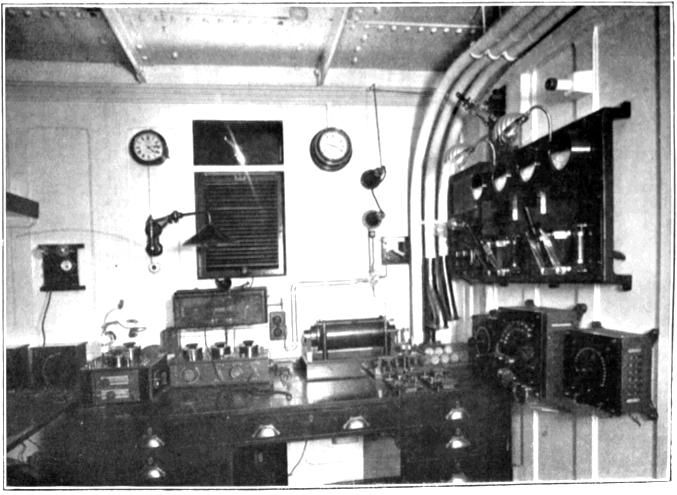Judge Rules Salvage Firm Can Recover the Titanic’s Marconi Telegraph
Critics of the decision argue that the wreck is a memorial to the 1,500 who died when the ship sank and should not be disturbed
/https://tf-cmsv2-smithsonianmag-media.s3.amazonaws.com/filer/5c/af/5cafb7c8-1b54-4274-94fc-b80f85803260/2020_may22_titanic.jpg)
On Monday, U.S. District Judge Rebecca Beach Smith ruled that salvage firm RMS Titanic, Inc. (RMST) will be allowed to recover a Marconi telegraph machine from the wreck of the Titanic. The decision alters a 2000 ruling that forbade cutting into or detaching any part of the ship, reports Ben Finley for the Associated Press.
The Marconi telegraph is historically significant because chief telegraphist Jack Phillips used the equipment to send the Titanic’s final distress calls. These frantic messages reached the RMS Carpathia, which was able to save around 700 of the ship’s 2,208 passengers and crew during the April 1912 disaster.
The Titanic’s hull, discovered south of Newfoundland in 1985, is split into two parts. Surrounded by a debris field, the wreck is located about two-and-a-half miles underwater.
“The Marconi device has significant historical, educational, scientific and cultural value as the device used to make distress calls while the Titanic was sinking,” wrote Smith, a maritime jurist based in Norfolk, Virginia, in the ruling, according to Neil Vigdor and Sandra Garcia of the New York Times.
Smith’s ruling allows RMST to “minimally to cut into the wreck” to access the telegraph room.
Numerous organizations—including the National Oceanic and Atmospheric Administration (NOAA)—are strongly opposed to the salvage plan. Per the AP, NOAA argues that RMST’s planned expedition violates an agreement made between the United States and the United Kingdom earlier this year. (Because the Titanic’s intended path would have brought it from England to New York City, the two countries share management of the ship’s remains.) The treaty expands on Unesco regulations that ban commercial exploitation of the wreck and call for its preservation, reported Colin Dwyer for NPR in January.
“Just like a lion is much better appreciated in the wilds of the African savannahs (sic) than it is stuffed in a museum, so too does the Marconi apparatus best tell its story and share its value where it is,” wrote David Conlin, chief of the U.S. National Park Service’s Submerged Resources Center, in a court filing quoted by National Geographic’s Kristin Romey.

The salvage firm previously sparred with NOAA in February, when it alleged that the government agency knew a submersible had collided with the wreck but failed to notify RMST. Though the white fiberglass vehicle in question resurfaced with a red smudge, the team behind the summer 2019 expedition said it hadn’t detected any impact and suggested that the vessel may have simply brushed against a “rusticle,” or icicle-shaped leftover formed when metal-eating bacteria chewed through the side of the ship.
In her ruling, Smith acknowledged NOAA’s arguments regarding the international agreement but noted that the agency was not a formal party in the case. Per the Associated Press, the judge further stated that the only matter before the court was the no-cut order made in 2000.
“We need to honor the ship and the passengers that sailed on her,” David Gallo, an oceanographer and consultant for RMST, tells the New York Times, adding that the company wants to avoid damaging the ship’s remains.
Says Gallo, “We may get out there and decide not to do it because it’s impossible to do it without destroying the ship. We have plans to do it surgically with minimum damage.”
Since 1994, RMST—which has sole salvage rights to the Titanic wreck—has brought some 5,000 artifacts up from the debris field to the surface. In 2018, the firm filed for bankruptcy. Its new owners, says RMST lawyer David Concannon to Times, are “being judged by the sins of the past, and they … want to do this right.”
The firm plans to use a remote-operated vehicle to enter the wreck through an open skylight above the telegraph room. If this strategy fails, the vehicle will cut an entrance in the hull. Then, an operator will direct the vehicle’s robotic arms to disconnect the telegraph parts from the ship. The court filing notes that the mission’s primary targets—a motor-generator set and discharger and a set of wall-mounted switchboards and regulators—“present serious challenges to recovery,” so three smaller, more lightweight artifacts are being treated as “secondary targets,” according to National Geographic.
Photographs and video taken in 2019 show damage to the wreck that RMST claims threatens the preservation of the Marconi telegraph. Still, says retired NOAA attorney and senior fellow at the Ocean Foundation Ole Varmer to the AP, RMST’s mission will likely face further legal issues.
Says Varmer, “The public interest in not disturbing the hull portions as part of a memorial was established more than three decades ago.”